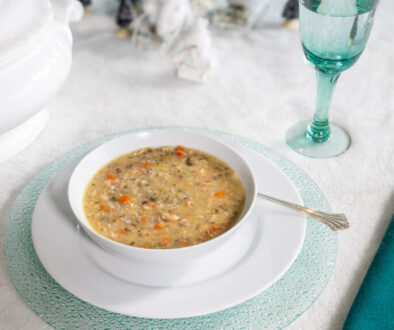Ashley Warley
Most people look at silverware as utilitarian. Sure, there are different styles of forks, knives, and spoons to appeal to every aesthetic, but at the end of the day, they’re tools. To Ashley Warley of Nedia Arts, however, they are art waiting to happen. She took a circuitous route to get there, but she found her niche, reshaping recycled flatware into distinctive jewelry pieces.
“I went to college for artistic flameworking, with every intention of being a glassblower,” Ashley told us. “I had some health issues and had to leave the program. When I came home, I didn’t want to lose the very little skill I’d managed to acquire, so I picked up my torch and started using it to heat and bend some forks.”


Clearly, it’s working—she’s been practicing this specific artistry for nearly 20 years now. “I have always made things—makers gotta make! I always say that silverware edited my artist brain and allowed me to focus on being good at one thing instead of trying allll the things,” Ashley said. “But honestly I started using silverware because it was so easy to come by.”
While Ashley enjoyed “mangling things,” it wasn’t marketable. “The silver plate and miscellaneous base metals crack and blister when they heat and cool improperly, leaving a scale on the metal that eventually causes it to become brittle and then break. So, I learned all the wrong ways.” But in trying all those “wrong ways” she took a closer look at old silverware. “It’s quite beautiful. So, I started working the flatware cold. I wasn’t really doing anything more design-wise at that point than picking out the pretty bits—cutting them off and drilling a hole to hang it from.”
Until! “My Aunt Mae-Mae’s tomato serving spoon. My mom had our own heirloom silverware appraised, and like most sterling plate at the time, it wasn’t worth much,” Ashley said. “Instead of shoving it all back under the bed, I asked if I could make this stunning tomato spoon into a pendant. Of course, she said yes, and people really noticed when I wore that one.”
Ashley was working at a café in Ocean City then, and customers started bringing her their heirlooms so she could create gifts for their families. “The café featured a local artist every month. October 2012 we were expecting Hurricane Sandy, and our artist wisely came to remove his artwork before we were walloped. The walls were bare, so it was suggested I hang some pieces. I did, and when our regular customers saw what I was making, it kind of took off. I was given an anvil and already had a Dremel, so I moved my clothes out of my walk-in closet and moved my few tools in. That was my first workshop.”


Although every piece is unique, there is a uniform process. “Everything starts with at least a quick doodle. It helps me understand how the entwined pieces need to fit together—if I plan to wrap it around or try a side bend. I try to keep my work fairly organic feeling, so it never comes out exactly like my drawing(s) and that’s okay! The fork does what the fork wants. My Fork Heart took me years, but I got there!”
That fork heart is her favorite piece. “It’s definitely the one I’m most proud of; I went through the motions of copywriting it. It really highlights my skill with my medium. I’ve never seen another made quite like it—woven together with no solder or adhesives, just brute force, vision, and stupid strong hands. I kept the first one and still have it.”
Each piece takes time, and “varies incredibly,” says Ashley. “A more difficult design like a kraken or fork bracelet, especially those with glass elements, takes a while. I’m putting a lot of stress on the metal when I bend it that way. If I’m not patient (and I am not patient), I’ll snap it.”
For example, a fork is laid out, hammered flat and marked, then drilled before any cut is made. “That one fork will become a pair of fork tine earrings and two small pendants or ornaments. The rough bits might take an hour, but I’m making different things at once. There’s absolutely a method to my production. It took a long time to figure out the proper order and proper tools. That one anvil and Dremel is now a full cold metal shop. My rough cuts are made on a band saw; a drill press cuts down on snapped bits, and I probably have close to 15 different bench grinders.”
Ahsley lives in an 1860s farmhouse on an acre and a half, “big gardens, two 110-lb dogs, 20-some chickens, a duck, and a cat. My workshop is no longer a walk-in closet, but a two-horse barn on our property. The novelty of living here is still not lost on me.”
Oh, and the name? “When I began making jewelry to sell, I was a young mother. I named my son Mark after his father, but until recently I always called him by his middle name, Aiden, which means ‘keeper of the flame’ in Gaelic. Nedia is Aiden written backward. But people think it’s my name all the time.”



